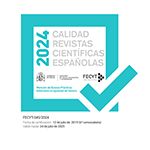La organización social del trabajo en los ingenios azucareros canarios (siglos XV-XVI). The Social Organization of Work in Sugar Mills of the Canary Islands (15th-16th centuries)
Resumen
This study shows the characteristics of the population that worked in the plantations and sugar mills in the Canaries during the first century after colonization. The workforce comprised qualified personnel: technicians and officers, generally from Portugal or more specifically from Madeira, the general body of paid workers, basically colonists, and the slaves, mainly of African origin. We analyze the qualitative and quantitative importance of each of these groups, from the end of the fifteenth century until the middle of the sixteenth, in each of the four “sugar islands”. Although the slaves were a major part of the workforce, they were not much more numerous than free workers in the plantations and mills, in contrast to the situation in other Atlantic territories involved in the production of sugar.Descargas
Descarga artículo
Licencia
La revista En la España Medieval, para fomentar el intercambio global del conocimiento, facilita el acceso sin restricciones a sus contenidos desde el momento de su publicación en la presente edición electrónica, y por eso es una revista de acceso abierto. Los originales publicados en esta revista son propiedad de la Universidad Complutense de Madrid y es obligatorio citar su procedencia en cualquier reproducción total o parcial. Todos los contenidos se distribuyen bajo una licencia de uso y distribución Creative Commons Reconocimiento 4.0 (CC BY 4.0). Esta circunstancia ha de hacerse constar expresamente de esta forma cuando sea necesario. Puede consultar la versión informativa y el texto legal de la licencia.
La revista En la España Medieval no cobra por tasas por envío de trabajos, ni tampoco cuotas por la publicación de sus artículos.












